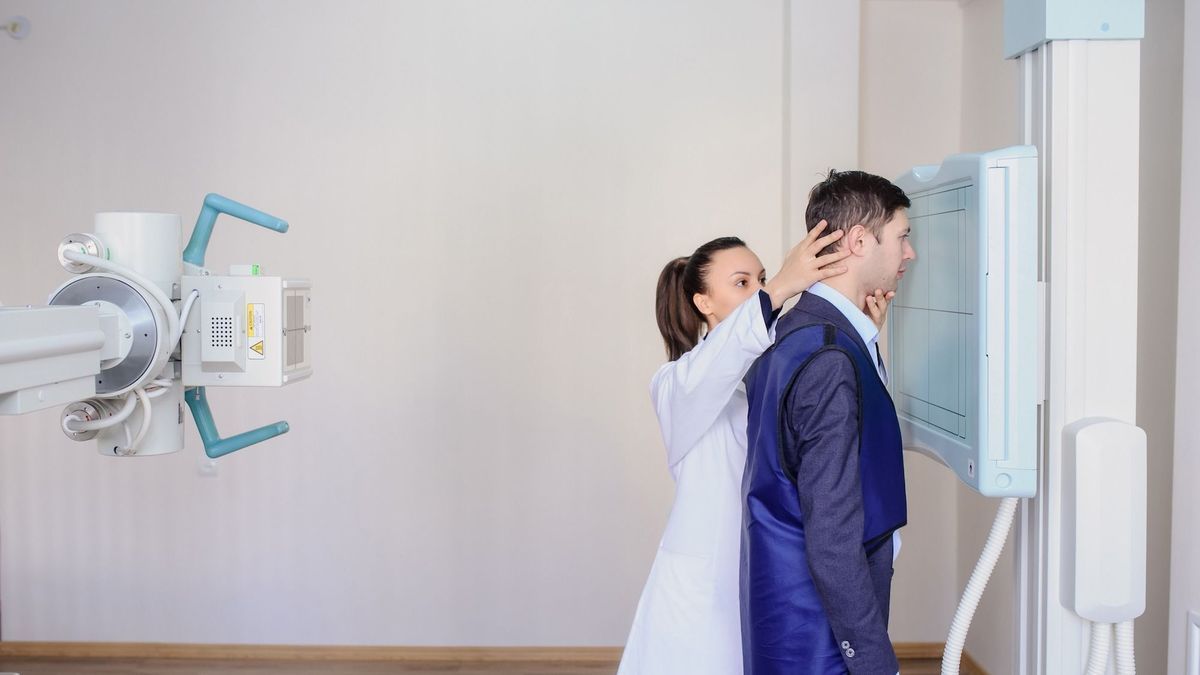
This medical imaging exam allows the sinus structures of the face to be visualized using X-rays. In what cases is it useful? What does it diagnose? How is the exam going ? Dr Raphaël Hadjedj, ENT doctor and head and neck surgeon, answers all our questions about sinus scanning.
Indications: Why do a sinus scan?
Scanning – or tomography – of the facial sinuses is a commonly prescribed examination in ENT medicine, because it offers precise visualization of the bony structures, which is essential for detecting possible abnormalities. “It is particularly prescribed in cases of recurrent sinusitis or as part of a check-up for chronic inflammation of the sinuses or respiratory tract.” indicates Dr Hadjedj. This imaging examination is also systematically offered before any nasal or sinus surgery, or in the event of trauma to assess a fracture of the facial bones.
It is also suggested in the presence of certain persistent symptoms such as sinus pain, headaches or facial pain.
Finally, sinus scanning may be indicated to look for more serious pathologies such as tumors.
Is sinusitis visible on CT scan?
The CT scan machine produces detailed images of the facial sinuses, helping to detect the classic signs of sinusitis, such as swelling and thickening of the sinus lining. It also makes it possible to differentiate acute sinusitis from chronic sinusitis:
- In the case of acute sinusitis : the scan generally reveals filling of the sinus cavities and mucosal thickening;
- In the case of the chronic sinusitis : we can visualize more diffuse lesions, such as edematous ethmoiditis or sinus filling.
The scan can also highlight a local cause, such as a dental infection or obstruction, which could be the cause of the sinusitis.
Finally, CT scanning of the sinuses is a valuable tool for monitoring patients with chronic sinusitis, since it makes it possible to evaluate the effectiveness of the treatment and identify possible recurrences.
Procedure of the examination: How does a sinus scan work?
The sinus scan is a simple and quick medical imaging test. The patient lies on his back, arms at his sides, on an examination table which automatically moves towards the wide scanner ring. “It is important that the patient remains still during the entire examination to obtain clear and precise images.” insists the specialist. He may be asked to hold his breath for a few seconds. Unlike MRI which requires remaining still in a narrow tunnel, the sinus scanner is not feared by people suffering from claustrophobia, because the device looks like a large ring.
Most of the time, the exam does not require the injection of a contrast product. However, if the radiologist deems it necessary, a contrast substance could be administered to improve the quality of the images.
Instructions can be given through a microphone from an observation room where the medical team monitors the procedure.
Once the scan is completed, the doctor processes the images and prepares his report, which is given to the patient quickly after the examination.
How long does a sinus scan take?
The duration of a sinus scan varies depending on the circumstances, but most of the time the exam itself is fairly quick. “Taking the images generally takes just over a minute,” indicates the ENT doctor. However, the total duration of the examination, from the patient’s arrival to obtaining the results and their departure, is longer. We recommend allowing on average 3/4 of an hour or even up to an hour in total, if more detailed images are necessary.” specifies our expert.
Cone beam, MRI, x-ray, CT, scanner: what’s the difference?
There are several medical imaging exams which differ depending on the technique used and which allow the visualization of certain tissues in particular.
- Le cone beam, ou CBCT, is a method of CT scanning that produces digital images. It is often used for musculoskeletal, dental, otological and maxillofacial study. “It uses a conical irradiation beam which allows lower irradiation than CT or x-ray” explains the specialist;
- L’IRM (Magnetic Resonance Imaging) uses a magnetic field to create detailed images of the body’s internal structures. It is used to examine soft tissues and organs;
- X-ray uses x-rays to produce two-dimensional images;
- CT, or Computed Tomographyis a another name for the scanner . “It uses Hadjedj.
These techniques can be complementary to each other depending on the particular cases and the diagnosis to be established.
Price: how much does a sinus scan cost?
The price of a sinus scan varies depending on several factors (radiologist’s fees, equipment used, fee overruns, injection of a contrast product, etc.). It consists of: the technical package (between 100 and 200 euros fully covered by health insurance) and medical fees. The agreed rate (excluding excess) of these medical fees is €32, but it may vary depending on possible additional costs.
Reimbursement for this examination by Social Security is 70%, which leaves less than 10 euros payable by the patient, which can be covered by mutual insurance, depending on the conditions of the contract.
